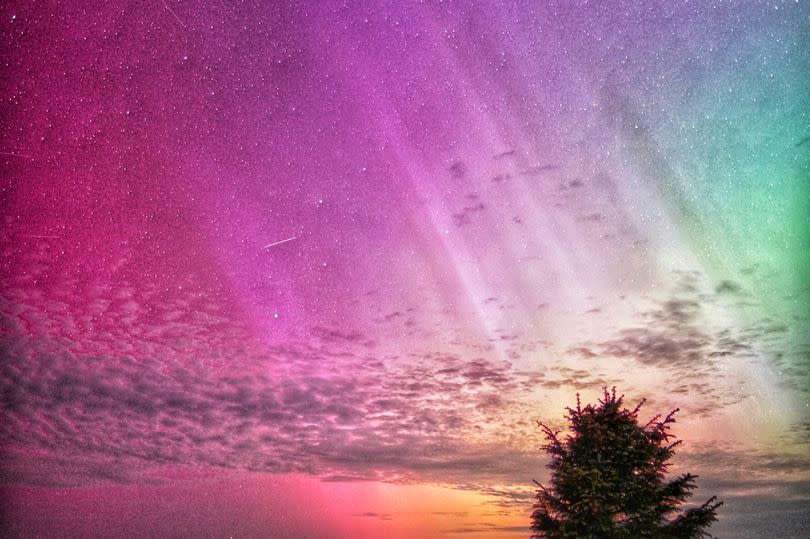Northern Lights alert: How to make sure you don't miss the aurora tonight

If you're keen to catch a glimpse of the Northern Lights, there's a way to ensure you don't miss out. Yorkshire has been treated to one spectacular night of aurora borealis on Friday and the hope of another showing on Saturday saw hundreds heading for the area's beauty spots with their cameras in tow.
Sadly, last night's promise of the luminous skies didn't quite deliver as there was too much cloud in the sky for a repeat of Friday's sensational performance. And while thousands did see the lights, many people were left disappointed as they didn't find out about the event in time.
Described by some as a 'bucket list' experience, witnessing this natural phenomenon is something not to be missed. To avoid disappointment tonight, following news that it could be seen again between 10pm and 2am, you can download a free app on your phone called AuroraWatch UK.
Read more: Will you be able to see Northern Lights tonight? Exact time to expect Aurora Borealis on Sunday
Run by scientists from the Space and Planetary Physics group at Lancaster University's Department of Physics, AuroraWatch UK offers alerts when the northern lights might be visible from the UK. You can find it in your phone's App store under the name AuroraWatch UK Aurora Alerts.
Once downloaded, you'll receive a message on your phone when there is activity likely to lead to a display of the northern lights. For instance, a red alert was sent out last night, reports Wales Online.
The aurora borealis' appearance came following the Met Office confirming a rare severe geomagnetic storm warning the first in nearly 20 years. The lights first appeared on Friday night, with thousands of people catching a glimpse of the beautiful skies of Yorkshire.
The National Oceanic and Atmospheric Administration has explained a geomagnetic storm, which resulted in a rainbow of lights in the sky, hit Earth on Thursday. This was caused by a "large, complex" sunspot cluster, 17 times the size of the earth, with the last G5 rated storm having occurred in October 2003 leading to power outages in Sweden.
This event lit up our night sky with an enchanting display of pink and green Northern Lights.
These coloured bands were reported across the UK and Europe, reaching as far south as Suffolk within the UK. Met Office has received images of Aurora sightings from places as distant as Barcelona and Prague.
To maximise your chances to observe such a phenomenon, meteorologists advise us to move away from streetlights, suggesting the use of a camera to capture the ethereal beauty of the aurora, as they are more capable of adapting to different wavelengths compared to human eyes.
According to predictions, the visibility of the Northern Lights may not be before 11 PM during this time of the year. Ideally, open spaces offering unhindered views of the northern horizon should be preferred for the sightings.
These breathtaking displays of light are a consequence of charged particles colliding with gases present in the atmosphere around the magnetic poles. The ensuing emission of light at varied wavelengths results in colourful galactic vistas in the sky.
In the northern hemisphere, auroras typically occur within a region known as the aurora oval, which spans latitudes between 60 and 75 degrees. However, during periods of intense activity, this zone widens, allowing for the possibility of auroral displays to be seen further south, sometimes even in the UK.
The US National Oceanic and Atmospheric Administration (NOAA) has reported that an "extreme" G5 geomagnetic storm, the highest level on the scale, struck the earth last Thursday. This was due to a "large, complex" sunspot cluster, which was 17 times the diameter of Earth.
It's been over two decades since the last G5 storm hit our planet back in October 2003, leading to power outages in Sweden. The sun undergoes a polar reversal every 11 years, triggering increased solar activity and resulting in spectacular northern lights.
The upcoming solar maximum is anticipated towards the end of 2024, according to scientists' forecasts.
Get all the latest and breaking news in Yorkshire by signing up to our newsletter here.

 Yahoo News
Yahoo News 
